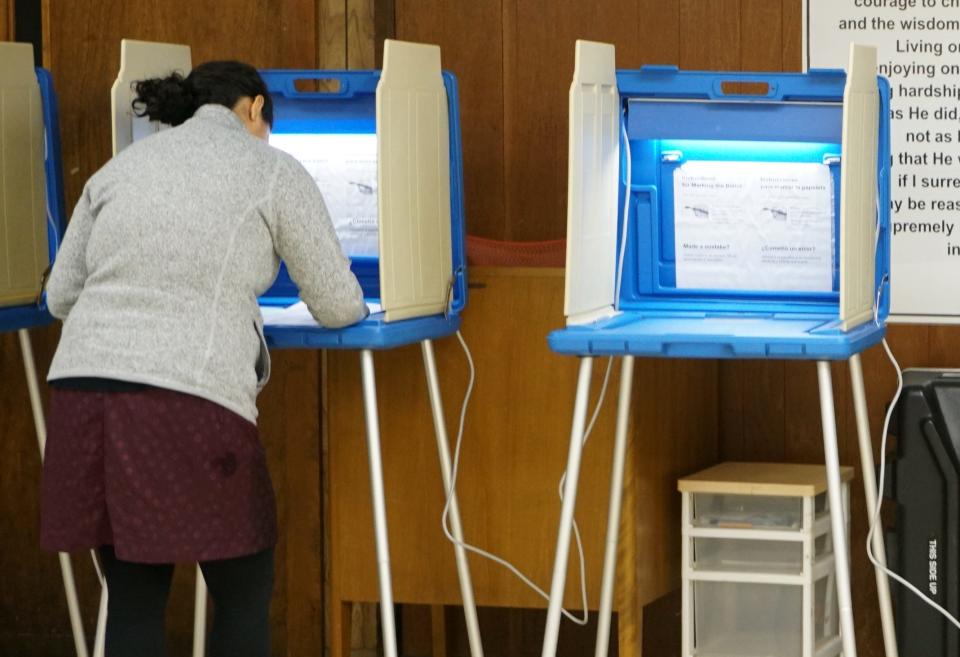Reforms to RI primary election system are needed. Here are some options. | Opinion
Guy Dufault is the former chairman of the Rhode Island Democratic Party and a political consultant. Gary Sasse served as the director of the Rhode Island Departments of Administration and Revenue, and executive director of Rhode Island Public Expenditure Council.
“Majority rule” is a key tenet of the American system of government. But today in Rhode Island and across the country, candidates can win elections with 30% of the vote – or even less.
To address this challenge, a group of Rhode Islanders recently issued the People’s Primary White Paper presenting options for much needed and long overdue reforms to the Ocean State’s primary election system. The options included: nonpartisan “top-two” primaries, ranked choice voting (RCV), and open partisan primaries.
People’s Primary was premised on the belief that a fair and accountable primary election system can influence who seeks public office, how issues are framed, and ultimately the quality of governance.
More: Do Rhode Islanders trust their government? Here's what a new URI poll found.
People’s Primary found that Rhode Island’s primaries were characterized by dismal voter participation, limited competition, and winners who often failed to earn 50% of the vote. A poll conducted by the Hassenfeld Institute for Public Leadership found that Rhode Island voters were open to changing the way elections are conducted, with 59% favoring an open top-two primary.
Since the People’s Primary White Paper was issued there has been considerable in-depth academic analysis nationwide of primary reform alternatives and how they might impact our democratic institutions.
The nonpartisan Unite America Institute, which researches the root causes of political polarization, recently weighed impact of California’s top-two nonpartisan primaries. They found the California reforms produced:

∎ More bipartisan and moderate legislative behavior.
∎ Higher overall voter participation in primary elections. In 2020, California had the third-highest primary turnout in the nation at 33.3 percent.
∎ Increased electoral competition both between and within political parties. “In the two election cycles prior to the implementation of Top Two (2008 and 2010) well over 80% of General Election Assembly partisan primary elections were uncontested. However, in every election cycle since then fewer than 20% of such primaries are uncontested.”
The top-two approach in California has increased voter participation and candidate competition while decreasing polarization. As Unite America concluded, “That is a recipe for more representative and functional government.”
Ranked choice voting is another primary reform option that has received considerable interest. It is a system where all candidates are ranked by each voter. If no candidate receives 50% of the vote a ranking process then commences. Ranking continues until a candidate obtains an outright majority. Ranked choice voting may require multiple rounds of vote counting, take weeks to certify results, and candidates who lose the initial round of voting can still prevail at the end of the process.
The key question about ranked choice voting is this: Does its potential to improve political accountability outweigh concerns about electoral transparency, efficiency and participation equality?
More: Looming retirement of RI elections director casts spotlight on position's tumultuous past
In April 2023, political scientists at the University of Minnesota’s Humphrey School of Public Affairs sought an answer. Their research found that here is little evidence that ranked choice voting decreased political polarization, but rather “increased animosity among Democrats and Republicans compared to our current system.” This is consistent with other research that found “The ranked-choice system … is biased towards extreme candidates and away from moderate ones.”
Proponents of ranked choice voting contend that it reduces negative campaigns, but political scientists at the University of Minnesota said “most research found little to no impact or even increased negativity.”
Another benefit of ranked choice voting mentioned by advocates is increased voter turnout and engagement of minorities. But researchers at the University of Minnesota found little evidence to support increased minority turnout and “some evidence that it chases them away.”
There are no panaceas for the problems confronting our politics, but primary reform based on facts and sound research is likely to produce better results than maintaining Rhode Island’s primary election system.
This article originally appeared on The Providence Journal: RI’s primaries have dismal voter participation, limited competition, and winners who often failed to earn 50% of the vote.

